Making time for accounts receivable is difficult in a busy organization. In many companies, collections are an ancillary function passed onto staff with other competing responsibilities.
What many owners don’t pause to consider is the fact that Accounts Receivable is a significant asset — typically the largest or second largest asset for most businesses. And its value is time-sensitive: the value of Accounts Receivable depreciates at a rate of 10% a month, becoming practically worthless by the end of a business year. That’s why it’s critical to take a proactive strategy to debt recovery, put processes in place to ensure that delinquent accounts are followed up on regularly and consistently.
 Here are several tips for setting up a collections system and ensuring that it runs smoothly.
Here are several tips for setting up a collections system and ensuring that it runs smoothly.
Establish your payment terms and payment methods.
Your company should first decide on its payment terms. Will you require payment right away, or set terms of Net 30 days, or Net 60 days? If your terms are longer, offering a discount for paying early may entice the customer to pay more quickly. Many companies offer discounts of one percent or two percent if the balance is paid within ten days.
Next, establish what payment methods your business will accept. Will you take cash only? Will you accept checks or credit cards? Will customers be permitted to make payments online? Many customers find it helpful to have a range of payment options. While some payment methods, such as credit cards, may incur fees for the business, many companies still find them a worthwhile investment.
Your business should also set up protocols for handling each payment method. Many retail stores require a photo ID from customers paying by check, for example.
On each invoice, clearly state your payment terms and penalties for non-payment.
Establish when and how often bills will be sent to your customers. Payment terms should be clearly outlined on each invoice, along with the payment methods you accept.
The way terms are worded can make a difference in how quickly customers pay. For example, a study done by Freshbooks.com found that invoices using the word “Days” instead of “Net” were paid faster and more often. Using specific terms such as “Due in 21 Days” instead of “Due Upon Receipt” also improved the payment time.
Politeness is critical. In the same study by Freshbooks, simply including a statement such as “Please pay your invoice within…” or “Thank you for your business” increased the percentage of invoices paid by more than five percent.
A good example might read, “Thank you for your business. Please remit payment within 30 days of the invoice date. There will be a 1.5% interest charge per month on past due invoices.”
Follow a strict procedure for late payments.
Set clear guidelines for how your company will handle non-payment. Make sure the policy is communicated to your customers and to your employees who handle collections. The following is an example of a timeline you could follow:
- For an invoice fewer than 30 days late- send a friendly reminder to the customer. It may be that the bill has been overlooked, or payment may be in the mail. Follow up with a phone call if you don’t receive a response.
- At 60 days past due- send a certified letter outlining what, if any, late fees or penalties have been added to the invoice and what action will be taken if the bill remains unpaid. Encourage the customer to call your company right away to resolve the issue.
- After 90 days- send a final notice by certified letter, re-stating what legal actions will be taken and what penalties and fees have been charged. Place the account on “credit hold”—no further services will be done for the customer until the balance is paid.
Review your accounts receivable aging report regularly.
Like all business processes, successful collections require management and oversight. The Aging Report is a quick way to gauge the success of your collection efforts. Review it on a regular basis- at least monthly, if not weekly.
Consider Outsourcing.
Studies show that it costs businesses an average of $8 to send an invoice- mostly due to the expense of labor. Even if you have a dedicated billing department, it makes sense to find a recovery partner if they can provide the same service for a lower per contact rate.
Managing Accounts Receivable takes time, but by putting policies in place you can save a great deal of time and money in the long run.






